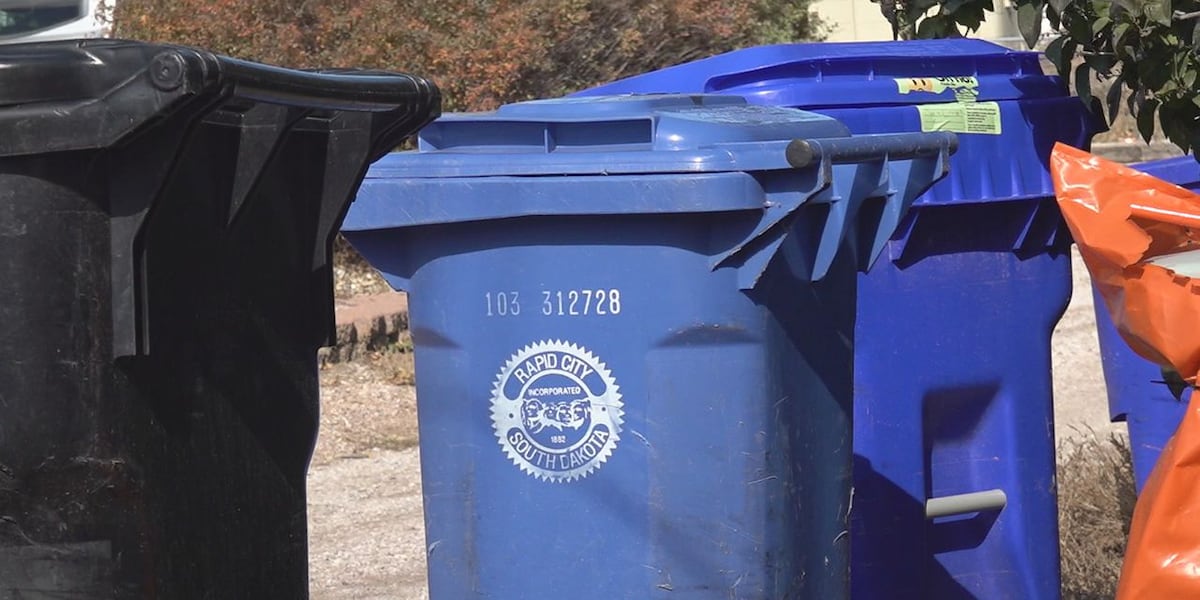Canadian Wildfires Trigger Air Quality Health Advisory – New York Almanack

Report on Air Quality Health Advisory: Environmental Health and Sustainable Development Implications
1.0 Introduction and Advisory Overview
A joint Air Quality Health Advisory was issued by the New York State Department of Environmental Conservation (DEC) and the State Department of Health (DOH) for Sunday, August 3, 2025. The advisory is a direct response to transboundary smoke from Canadian wildfires, an event that underscores critical challenges related to public health, climate action, and sustainable communities.
- Affected Regions: Northern and Western New York, the Eastern Lake Ontario region, and the Adirondacks.
- Primary Cause: Smoke plumes containing fine particulate matter (PM2.5) from Canadian wildfires.
- Predicted Impact: Visible smoke, hazy skies, and hazardous spikes in air pollution, with peak intensity forecasted for approximately 11:00 AM.
2.0 Public Health Impacts and Alignment with SDG 3: Good Health and Well-being
The issuance of this advisory is a critical measure to safeguard public health, directly aligning with the objectives of Sustainable Development Goal 3. The primary health threat stems from fine particulate matter (PM2.5), which consists of airborne particles 2.5 microns or less in diameter that can penetrate deep into the respiratory system.
2.1 Health Risks Associated with PM2.5 Exposure
Exposure to elevated PM2.5 levels directly undermines SDG Target 3.9, which aims to substantially reduce illnesses and deaths from air pollution. The documented health effects include:
- Short-term Effects: Irritation to the eyes, nose, and throat; coughing; sneezing; runny nose; and shortness of breath.
- Aggravation of Chronic Conditions: Worsening of medical conditions such as asthma and heart disease.
- Vulnerable Populations: Children, the elderly, and individuals with pre-existing heart or respiratory problems are identified as being particularly sensitive to the adverse effects of poor air quality.
3.0 Environmental Context and Broader SDG Linkages
This air quality event is not an isolated incident but is interconnected with broader environmental challenges addressed by the Sustainable Development Goals, particularly those concerning climate, ecosystems, and sustainable communities.
3.1 SDG 13: Climate Action and SDG 15: Life on Land
The root cause of the advisory—widespread wildfires—highlights failures and urgent needs related to global environmental stewardship.
- SDG 13 (Climate Action): The increasing frequency and intensity of wildfires are widely recognized as consequences of climate change. This event serves as a stark reminder of the transboundary impacts of climate-related hazards and the critical need to strengthen resilience and adaptive capacity as per Target 13.1.
- SDG 15 (Life on Land): The wildfires causing the pollution represent a catastrophic loss of forest ecosystems, directly contravening the goals of protecting, restoring, and promoting the sustainable use of terrestrial ecosystems.
3.2 SDG 11: Sustainable Cities and Communities
Air quality is a fundamental component of a sustainable and healthy community. This advisory highlights a direct threat to the viability of communities in the affected regions.
- The degradation of air quality directly challenges the objective of SDG Target 11.6, which calls for reducing the adverse per capita environmental impact of cities and settlements, with special attention to air quality.
- The advisory itself represents a key management action for maintaining community health and resilience in the face of environmental threats.
4.0 Official Recommendations for Mitigating Exposure
To protect public health and promote community resilience in alignment with SDG 3 and SDG 11, the DEC and DOH recommend the following precautionary measures:
- Minimize outdoor activities, especially strenuous exertion, in areas where fine particle concentrations are high.
- Reduce exposure by remaining indoors. It is important to note that indoor air quality can also be compromised by sources such as tobacco, candle, or incense smoke.
- Individuals in sensitive groups should take special care to avoid exposure.
SDGs Addressed in the Article
SDG 3: Good Health and Well-being
The article directly addresses public health by issuing an “Air Quality Health Advisory.” It details the health risks associated with poor air quality, specifically from fine particulate matter (PM2.5) originating from wildfires. The text explicitly mentions short-term health effects like “irritation to the eyes, nose, and throat, coughing, sneezing, runny nose, and shortness of breath” and the worsening of chronic conditions such as “asthma and heart disease.” It also identifies vulnerable populations, including “people with heart or breathing problems, and children and the elderly,” which aligns with the goal’s focus on ensuring healthy lives for all.
SDG 11: Sustainable Cities and Communities
The advisory is for specific populated regions in New York State, including “Northern and Western New York, including the Eastern Lake Ontario region and the Adirondacks.” The core issue is urban and regional air quality, a key component of making human settlements safe, resilient, and sustainable. The article discusses the source of the pollution (PM2.5) which often comes from “processes that involve combustion (e.g., vehicle exhaust, power plants, and fires),” linking the issue to urban and industrial activities that impact community environments.
SDG 13: Climate Action
The article attributes the air quality issue to smoke from “Canadian wildfires.” Large-scale wildfires are recognized as a climate-related hazard, often increasing in frequency and intensity due to climate change. The issuance of a health advisory is a form of adaptive action to a climate-related disaster, aiming to protect the population from its immediate impacts. This demonstrates a response to strengthen resilience and adaptive capacity to climate-related hazards.
SDG 15: Life on Land
The root cause of the air pollution discussed is “wildfires.” These events represent a significant threat to terrestrial ecosystems, forests, and biodiversity. While the article’s focus is on the atmospheric consequence (smoke), it inherently connects to the degradation of forests and land, which SDG 15 aims to protect, restore, and manage sustainably.
Identified SDG Targets
-
Target 3.9: By 2030, substantially reduce the number of deaths and illnesses from hazardous chemicals and air, water and soil pollution and contamination.
The entire article is centered on this target. The advisory is issued because pollutants, specifically “fine particulate matter (PM2.5),” have reached levels that can cause illness. The text details these potential illnesses and aims to reduce public exposure, thereby mitigating the health impacts of air pollution.
-
Target 11.6: By 2030, reduce the adverse per capita environmental impact of cities, including by paying special attention to air quality and municipal and other waste management.
The advisory focuses on the air quality in specific New York regions. The monitoring and reporting on the “Air Quality Index (AQI)” and PM2.5 levels are direct actions related to paying special attention to air quality to protect the inhabitants of these communities.
-
Target 3.d: Strengthen the capacity of all countries, in particular developing countries, for early warning, risk reduction and management of national and global health risks.
The “Air Quality Health Advisory” issued by the New York State Department of Environmental Conservation (DEC) and State Department of Health (DOH) is a clear example of an early warning system. It is designed to inform the public of a health risk (poor air quality) and provide guidance on how to manage that risk (“minimize outdoor and indoor sources and avoid strenuous activities”).
-
Target 13.1: Strengthen resilience and adaptive capacity to climate-related hazards and natural disasters in all countries.
The advisory system is a practical measure to build resilience to the impacts of wildfires, which are a climate-related natural hazard. It represents an adaptive strategy to cope with the transboundary effects of these events, protecting human health from the immediate danger of smoke pollution.
Implied Indicators for Measuring Progress
-
Indicator 11.6.2: Annual mean levels of fine particulate matter (e.g. PM2.5 and PM10) in cities (population weighted).
The article is explicitly about pollution from “fine particulate matter (PM) consist[ing] of tiny solid particles or liquid droplets in the air that are 2.5 microns or less in diameter.” The entire advisory system is based on measuring and forecasting these levels. The “Air Quality Index (AQI)” mentioned is a tool used to communicate the concentration of PM2.5 and other pollutants to the public.
-
Indicator 3.9.1: Mortality rate attributed to household and ambient air pollution.
While the article does not provide mortality statistics, it directly links PM2.5 exposure to the worsening of potentially fatal conditions like “asthma and heart disease.” The measurement of PM2.5 and the issuance of health advisories are preventative measures aimed at reducing the illnesses and deaths that this indicator tracks.
-
Existence of a national/local disaster risk reduction strategy (related to Indicator 13.1.2).
The coordinated action between the DEC and DOH to predict pollution levels and issue a public “Air Quality Health Advisory” functions as a local disaster risk reduction strategy. The system described in the article—where “DEC meteorologists predict levels of pollution” and advisories are issued when the AQI exceeds 100—is itself an indicator of implemented strategy and capacity.
SDGs, Targets, and Indicators Analysis
| SDGs | Targets | Indicators Mentioned or Implied in the Article |
|---|---|---|
| SDG 3: Good Health and Well-being |
3.9: Reduce deaths and illnesses from air pollution.
3.d: Strengthen capacity for early warning and management of health risks. |
For 3.9: Levels of fine particulate matter (PM2.5). The article states, “Exposure to elevated levels of fine particulate matter can also worsen medical conditions such as asthma and heart disease.”
For 3.d: The existence of the “Air Quality Health Advisory” system itself, issued by DEC and DOH as an early warning. |
| SDG 11: Sustainable Cities and Communities | 11.6: Reduce the adverse per capita environmental impact of cities, paying special attention to air quality. | 11.6.2: The measurement of the “Air Quality Index (AQI)” and “fine particulate matter (PM2.5)” in populated regions of New York State. |
| SDG 13: Climate Action | 13.1: Strengthen resilience and adaptive capacity to climate-related hazards. | The advisory system as a local disaster risk reduction strategy to adapt to the health impacts of wildfires. |
| SDG 15: Life on Land | 15.2 & 15.3: Promote sustainable forest management and combat land degradation. | The occurrence of “Canadian wildfires” is an implied negative indicator, suggesting challenges in preventing large-scale forest fires and land degradation. |
Source: newyorkalmanack.com

What is Your Reaction?
 Like
0
Like
0
 Dislike
0
Dislike
0
 Love
0
Love
0
 Funny
0
Funny
0
 Angry
0
Angry
0
 Sad
0
Sad
0
 Wow
0
Wow
0
























;Resize=805#)






















































